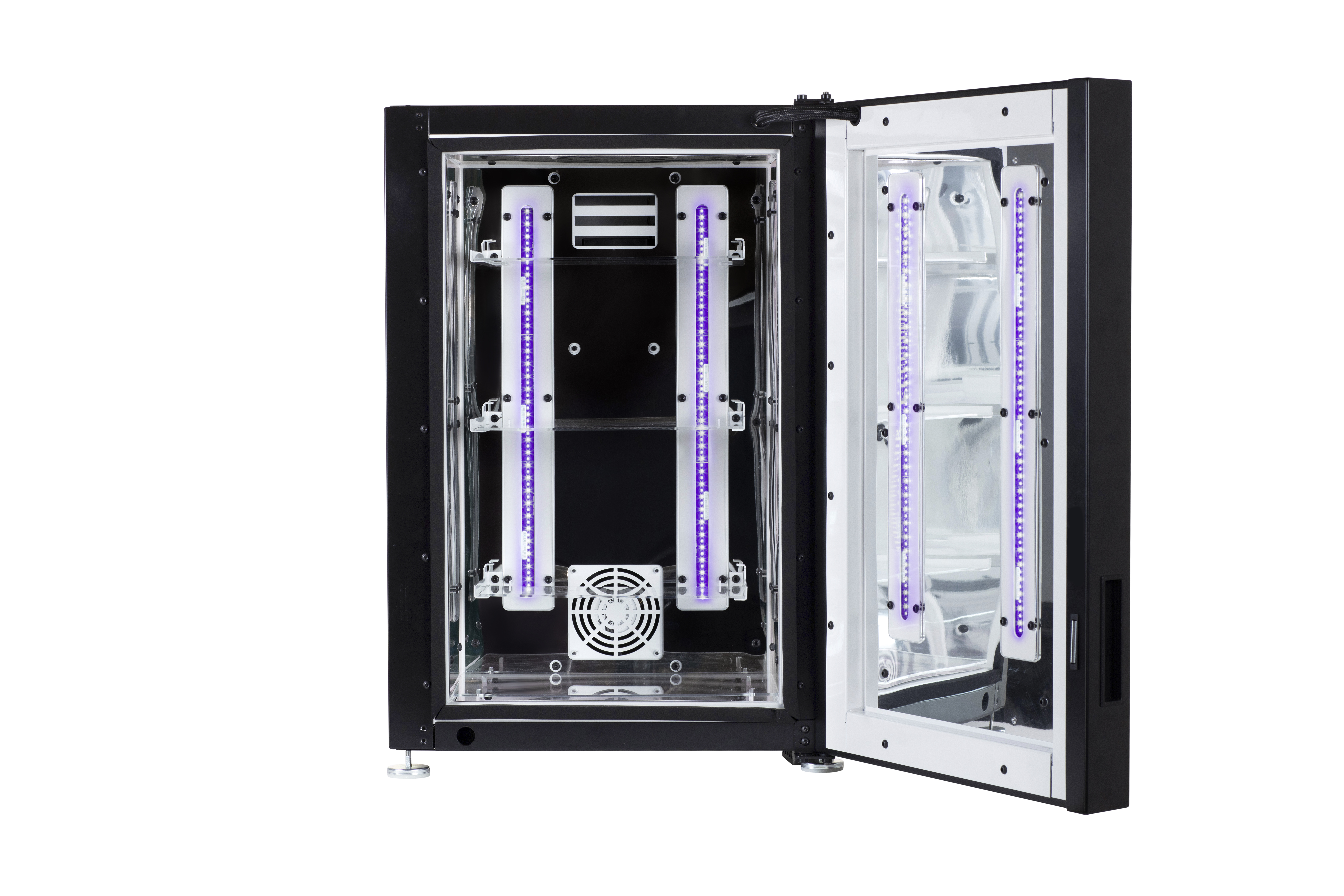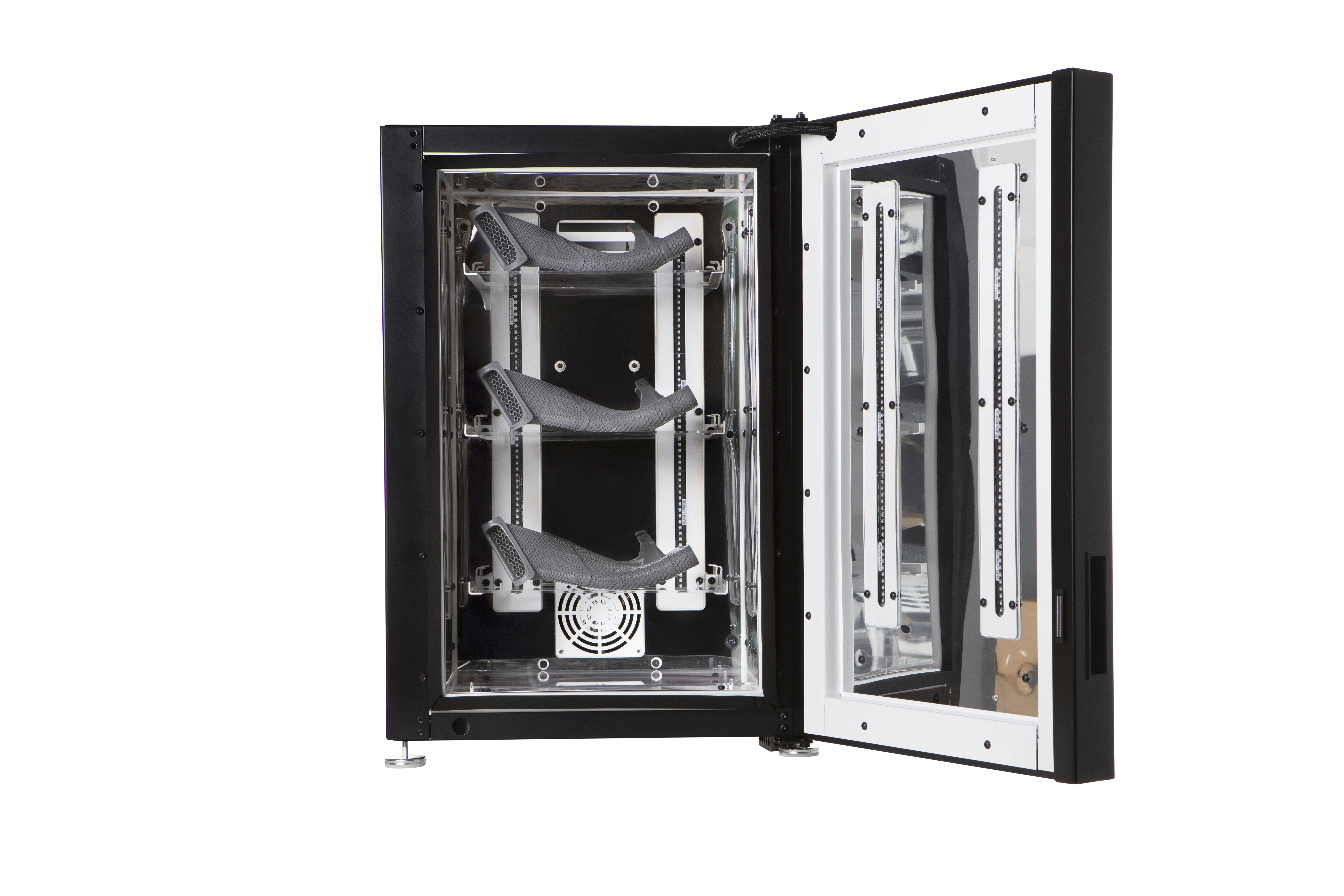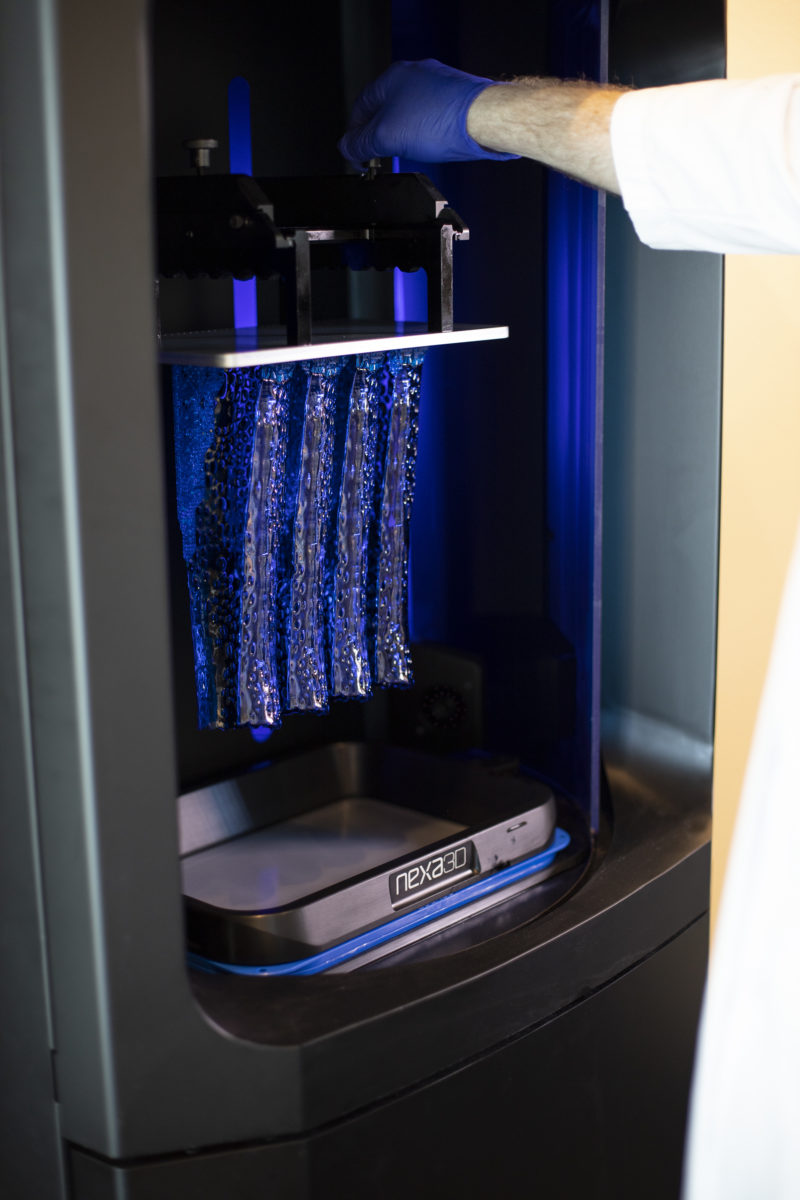Nexa3D, a US-based SLA 3D printer manufacturer has launched a new post-processing system called the xCure.
The machine, which has been custom-made for use with Nexa’s flagship NXE400 3D printer, is reportedly capable of post-processing photoplastic-based parts consistently, and on a “production scale.” Nexa’s latest system has also been designed to cure photopolymer components in a user-friendly way, by streamlining workflows, and making process controls consistent, regardless of the part’s size or complexity.
“We are very excited to bring the xCure to market, underscoring our commitment to deliver fully validated workflow solutions for manufacturing at scale,” said Avi Reichental, Co-Founder and CEO of Nexa3D. “Only through the rigorous development, simulation, and testing of predictive and prescriptive end-to-end workflows can we unlock the full range and consistency of mechanical properties.”

Nexa3D’s new xCure post-processing system
Nexa3D has launched the xCure with the aim of enabling printed parts to maximize the properties of their materials while increasing the process’s overall accessibility. The firm’s machine comes equipped with six high-power LEDs that operate at 356 and 405-nanometer wavelengths, as well as serial UV and thermal curing modes, which provide 360° coverage and uniform curing cycles.
The system also includes prescribed post-processing menus that allow users to control the curing process and deliver validated workflows, independently from the structure and size of the printed parts. In addition to ensuring dimensional accuracy, the firm’s proprietary software acts as an accessible way of allowing customers to tightly control the structural and molecular integrity of their parts.
What’s more, the machine’s impressive capacity of 21” x 20” x 32” (WDH), means that it can accommodate several individual components, up to a maximum volume of 16 liters. The system’s large processing chamber is able to hold up to three build plates simultaneously, allowing parts to be cured independently, according to their specific properties and needs.
Nexa’s new platform is designed to be user-friendly too, and it functions using a simple click-rotate and push system. Users can choose the most effective of three different curing modes including UV only, heat-only, and UV+heat, which act to enhance the material’s properties and maintain part performance.

Nexa3D’s growing 3D printing portfolio
Nexa3D specializes in making polymer-based 3D printers, that are powered by its proprietary Lubricant Sublayer Photo-curing (LSPc) and Quantum Laser Sintering (QLS) technologies. These manufacturing techniques are capable of reaching print speeds of up to 1 cm per minute, meaning that they can effectively reduce the time it takes to complete a 3D printing cycle.
The key to Nexa’s technology is a uniform light source, which is used to form a product in a layer-by-layer photopolymerization (SLA) 3D printing process. As an additional step, the company’s machines feature a self-lubricating membrane that’s used to ensure that the resin is evenly distributed across the system’s build plate.
The technology is featured within Nexa’s NXE400 SLA 3D printer, which was first introduced at RAPID + TCT 2019, and now benefits from the custom-made xCure system. Leveraging LSPc, and an advanced resin bed system, the NXE400 is reportedly capable of producing parts six times faster than other Digital Light Processing (DLP) machines.
Nexa3D also markets a wide range of polymers including the xCE-Black, a single-cure thermoplastic with isotropic and long-term environmental stability properties. The company later introduced xClean, an eco-friendly solvent that’s well-suited to resin-based 3D printers, and the xCE-White, a photoplastic which is specifically designed to produce injection molding-level parts.
In recent years, Nexa has also partnered with other industry insiders to produce enhanced materials and enable new applications. Working with Henkel for instance, the firm developed xMED412, a new 3D printing polymer for producing medical devices. Nexa has also partnered with DSM to accelerate the speed of its QLS 350 system, through an agreement which ensured that its sustainable powders were included with every QLS printer purchased.
On this occasion, Nexa3D has decided to release a new hardware solution in the form of its new xCure post-processing system, as a means of producing better parts from its NXE400 SLA 3D printer.

Post-processing in the 3D printing industry
Post-processing is a vital final stage of the 3D printing process, as it enables parts to be finished for end-use applications, and a number of firms have developed their own systems in recent years with this goal in mind.
One of the pioneers in post-processing technologies, AMT has launched a chemical vapor smoothing technology for parts made from thermoplastics This technology, part of the PostPro3D series, has also been patent protected for the UK.
In terms of tanks, Post Process Technologies, an automated post-printing system manufacturer, has launched DEMI 4000. The SLA resin removal machine is the largest submersion system on the market, holding up to 275 gallons of detergent.
As for colours, DyeMansion, an AM finishing system manufacturer, has added 17 new colours to its palette, specifically designed for post-processing 3D printed grey HP MJF parts.
Austrian 3D printer manufacturer Genera, launched its first system last month which comprised two units: the F2 and G2. The F2 post-processing unit is similar to the xCure in that it washes and post-cures 3D printed components using an integrated magnetic stirrer.
US-based SLA 3D printer producer Formlabs, recently launched its Form Wash and Form Cure machines. The platforms allow users to post-process parts in a user-friendly way by “setting the time, and walking away,” according to David Lakatos, Chief Product Officer at Formlabs.
Elsewhere, post-processing system producer LuxYours, has obtained a patent for its Iterative Flux Smoothing (IFS) system. IFS combines several chambers to form a closed volume, where 3D printed parts can be pre-conditioned separately and smoothed together.
Subscribe to the 3D Printing Industry newsletter for the latest news in additive manufacturing. You can also stay connected by following us on Twitter and liking us on Facebook.
Be sure to subscribe to the Another Dimension podcast on your chosen podcast player to make sure you never miss an episode.
Looking for a career in additive manufacturing? Visit 3D Printing Jobs for a selection of roles in the industry.
Featured image shows Nexa 3D’s post-processing device, xCure, with six high power LED lights turned on. Photo via Nexa 3D


